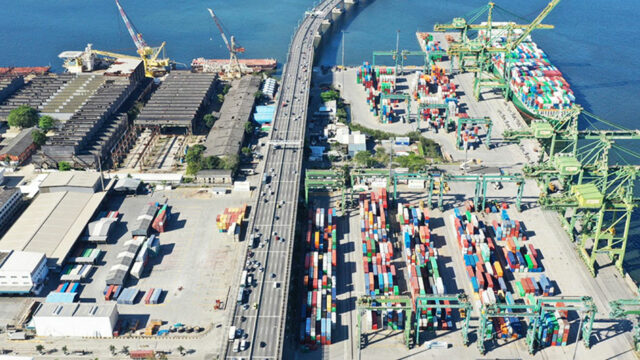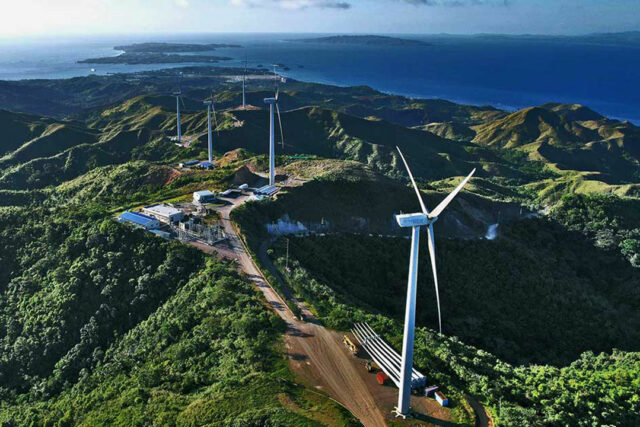Historically celebrated for its remarkable beauty and biodiversity, the Philippines’ archipelagic geography has emerged as a critical economic challenge. Today, logistics costs consume an alarming 27.5% of the country’s GDP — the highest among ASEAN nations — significantly hindering economic growth, inflating consumer prices, and weakening global competitiveness. In stark contrast, neighbors, like Indonesia and Thailand, have successfully transformed similar geographic hurdles into economic opportunities. Urgent and targeted reforms are essential if the Philippines wishes to avoid further falling behind.
ROOT CAUSES OF THE PROBLEM
The country’s logistics inefficiencies stem from several structural and systemic factors:
• Archipelagic Complexity: Distributing goods across over 7,000 islands requires costly and inefficient inter-island shipping. Domestic maritime transport rates often rival or exceed international freight charges, significantly increasing overall costs.
• Infrastructure Deficiencies: The country struggles with congested ports, substandard cold chain facilities, and inadequate road networks, all prolonging delivery timelines. Metro Manila’s ports manage 70% of the national container volume, routinely exceed operational capacity, and function at 120%, resulting in chronic delays and inflated costs.
• Customs Inefficiencies: The Philippine customs clearance procedures for imports average eight to nine days, compared to Thailand’s one to five days on average.
• Regulatory Fragmentation: Overlapping policies and lack of inter-agency coordination stifle competition and limit growth in the logistics sector.
These systemic challenges severely impact both businesses and consumers. Logistics-related expenses currently represent 27% of sales revenues for Philippine businesses — more than double Thailand’s rate of 11%. Consumers bear the brunt, exemplified by Mindanao farmers who face higher costs to transport goods domestically than to export internationally.
LESSONS FROM ASEAN SUCCESS STORIES
Indonesia and Thailand provide valuable blueprints that the Philippines can adopt.
1. Indonesia’s Digital Transformation Blueprint. Indonesia dramatically reduced logistics costs from 24% to 14% of GDP by leveraging digital technologies through its National Logistics Ecosystem (NLE), which was initiated in 2020 through Presidential Instruction. With a target of 8% by 2045, the NLE includes the following reforms:
• Port Automation: Technologies, like RFID tagging and blockchain-driven documentation, significantly cut cargo processing times by 30% at major ports, such as Tanjung Priok.
• Unified Digital Platforms: A comprehensive digital integration of customs, shipping, and warehousing data streamlines administrative procedures and enhances transparency.
• AI-Driven Logistics: Deployment of artificial intelligence (AI) for route optimization reduces trucking fuel costs, while predictive analytics mitigates inventory wastage.
2. Thailand’s Infrastructure Excellence. Thailand boasts of the ASEAN’s lowest logistics costs at 11.1% of GDP, thanks to strategic infrastructure investments and robust policy planning:
• Multimodal Networks: Efficient rail-road-port connectivity ensures quick, congestion-free transportation from Laem Chabang Port to Bangkok and surrounding areas.
• Public-Private Partnerships: Collaborations with private sector giants, like the CP Group, led to advanced cold storage facilities, reducing agricultural spoilage rates by 20%.
• Consistent Policy Direction: A long-term logistics master plan emphasizing port expansions and regulatory simplification has attracted over $10 billion in logistics-focused foreign direct investment (FDI).
PATHWAYS FORWARD FOR THE PHILIPPINES
Drawing on these regional examples, the Philippines should adopt a comprehensive reform agenda built on four key pillars:
1. Accelerate Digitalization
• Establish a National Logistics Platform modeled after Indonesia’s NLE, starting with pilot projects at the Port of Manila, to consolidate customs, shipping, and warehouse data.
• Implement RFID and AI-driven cargo management technologies to reduce cargo handling times by up to 40%.
2. Enhance Infrastructure through Public-Private Collaboration
• Expedite projects under the “Build Better More” initiative, prioritizing significant port enhancements, such as the $1-billion New Manila International Airport.
• Develop integrated multimodal transport corridors, notably connecting agricultural producers in Luzon to consumer markets in the Visayas and Mindanao, potentially cutting transport costs for agricultural goods by at least 25%.
3. Implement Regulatory Reforms
• Adopt a single-window digital customs system, emulating Thailand’s model that slashed clearance times to under 24 hours, aiming for the digitalization of 90% of customs processes by 2026.
• Revise restrictive cabotage laws to encourage FDI and competition in domestic maritime transport, thus reducing inter-island shipping costs.
4. Build Climate-Resilient and Sustainable Supply Chains
• Construct disaster-resistant warehousing infrastructure modeled after Indonesia’s flood-resistant facilities to protect supply chains from frequent climate disruptions.
• Introduce incentives for sustainable logistics practices, promoting electric vehicles and solar-powered storage facilities, inspired by Thailand’s successful $500-million green logistics fund.
PROMISING INITIATIVES IN THE PHILIPPINES
1. Mandatory e-Invoicing for Customs. Implementing mandatory e-invoicing for customs in the Philippines, set to begin by March 2026, has the potential to reduce logistics costs significantly. This initiative introduces a pre-border technical verification and cross-border electronic invoice system to streamline customs processes and improve supply chain efficiency. While this initiative shows promise, some challenges must be resolved for its full impact:
• Digital Infrastructure: The success of e-invoicing depends on robust broadband connectivity across the country. The government’s ongoing Philippine Digital Infrastructure Project aims to address this gap by expanding high-speed internet access nationwide.
• Adoption by Stakeholders: Ensuring that all stakeholders — large taxpayers, e-commerce firms, exporters, and customs brokers — are prepared for compliance is crucial. Training programs and technical support will be needed to facilitate a smooth transition.
2. Luzon Economic Corridor. The Luzon Economic Corridor (LEC) Initiative is a trilateral economic development project launched by the Philippines, Japan, and the United States in April 2024, during their first-ever trilateral Summit held at the White House in Washington, DC. The LEC is part of the G7’s Partnership for Global Infrastructure and Investment (PGII) and represents the first such corridor in the Indo-Pacific region.
The LEC aims to enhance connectivity between key economic hubs in Luzon, including Subic Bay, Clark, Metro Manila, and Batangas. It focuses on coordinated investments in high-impact infrastructure projects, such as advanced rail systems to improve regional connectivity and port modernization to streamline maritime trade. The initiative is designed to address logistical bottlenecks that hinder economic efficiency and strengthen interconnectivity between Central Luzon and Calabarzon regions.
CONCLUSION: TIME FOR BOLD AND DECISIVE ACTION
The logistics challenge in the Philippines is undeniably critical, yet it presents an extraordinary opportunity for transformative change. By adopting proven regional strategies — Indonesia’s digital revolution and Thailand’s infrastructural prowess — the Philippines can revitalize its logistics sector, significantly reduce costs, and substantially boost its competitiveness.
The pathways forward require not merely incremental steps but bold, visionary leadership and committed action from policymakers and stakeholders alike. The urgency is clear: the Philippines must seize this moment or risk further economic marginalization in the rapidly advancing ASEAN community. The lessons are evident, and the pathways and planned initiatives are set; now is the time to act decisively to secure a prosperous future.
Alfredo E. Pascual is a former president of the Management Association of the Philippines and now an independent director of BDO Unibank. He has served as secretary of Department of Trade and Industry, president of the University of the Philippines, director of Private Sector Operations at the Asian Development Bank, CEO of the Institute of Corporate Directors, and a finance professor at the Asian Institute of Management.
map@map.org.ph
aepascual@gmail.com















